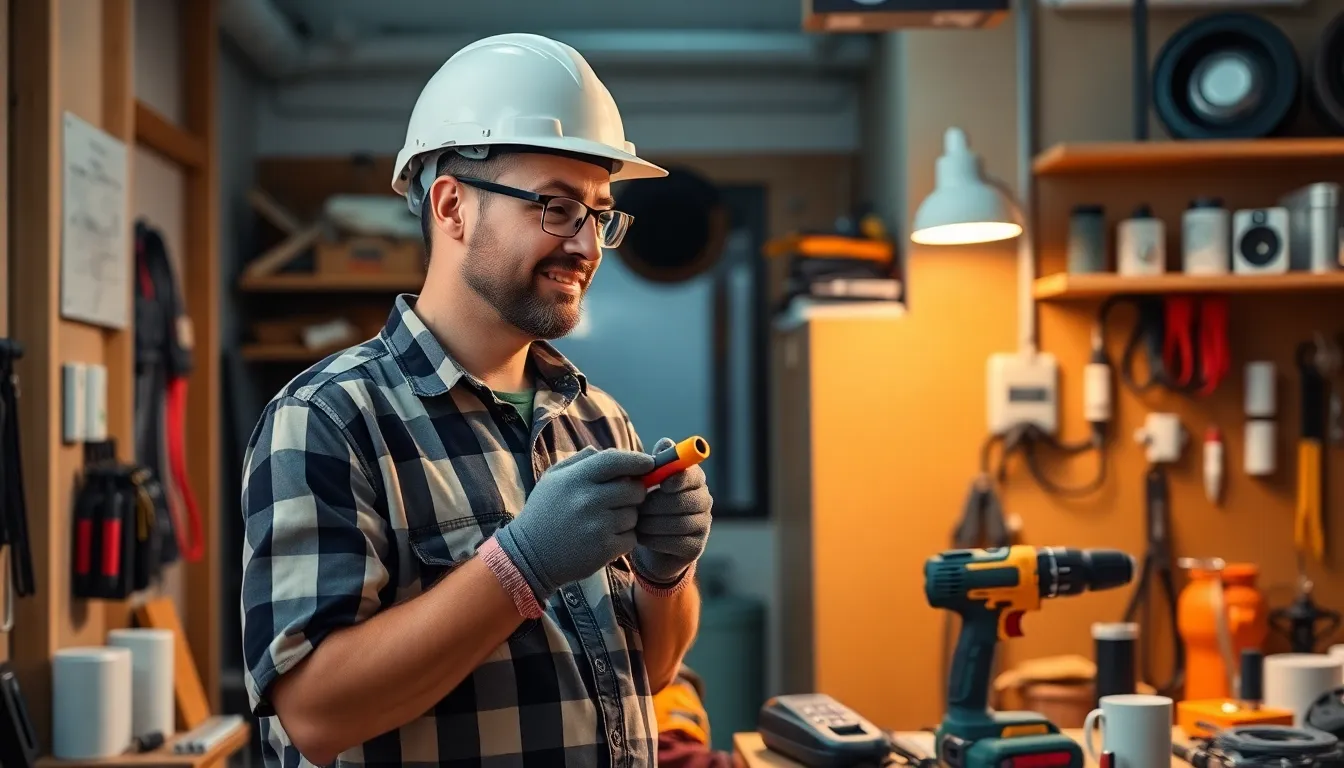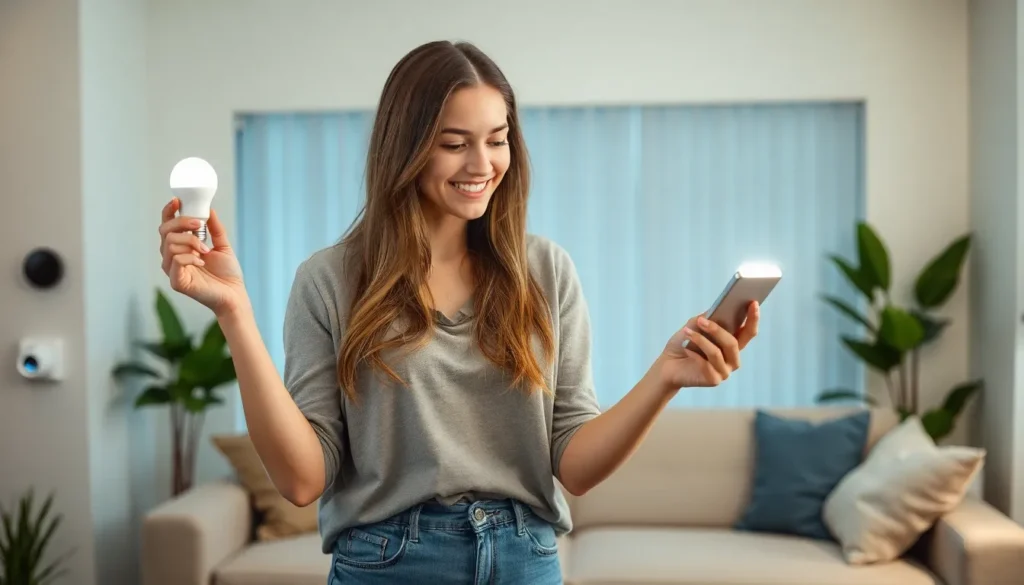Imagine walking into your home and having the lights flicker on like a scene from a sci-fi movie. With DIY home automation, this dream can become a reality without breaking the bank or calling in a tech wizard. It’s all about transforming your humble abode into a smart sanctuary where you can control everything with just a tap or a voice command.
DIY Home Automation
DIY home automation allows individuals to upgrade their living spaces into intelligent environments. Homeowners can achieve remarkable control over lighting, temperature, and security, enhancing comfort and efficiency.Benefits of DIY Home Automation
Flexibility characterizes DIY home automation. It enables customization according to specific needs. Savings on installation costs is another significant advantage. Homeowners avoid expensive professional services while gaining valuable skills. Increased convenience plays a crucial role, as users manage devices remotely using smartphones or voice commands. Energy efficiency often results from automated lighting and temperature control, leading to reduced utility bills. Enhanced security offers peace of mind through smart cameras and sensors.Common DIY Home Automation Projects
Smart lighting stands out among popular DIY projects. It allows users to control home lighting via mobile apps or voice commands. Another common project involves smart thermostats, which optimize HVAC systems based on personal schedules. Security cameras also rank high, providing real-time monitoring and alerts. Homeowners frequently explore automated door locks, granting access convenience and added security. Simple integrations, such as smart plugs, facilitate control of various appliances remotely.Getting Started with DIY Home Automation

Essential Tools and Equipment
Gather necessary tools before starting. A multimeter helps check electrical connections. Screwdrivers, both flathead and Phillips, allow for easy installation of devices. A drill simplifies creating mounting holes and securing hardware. Wire strippers assist in preparing electrical wires for connections. Smart devices typically come with installation guides that outline required tools, reducing uncertainty during setup.Choosing the Right Automation System
Select an automation system that best fits personal preferences. Compatibility with existing devices plays a crucial role in the decision. Many systems support various protocols, such as Zigbee or Z-Wave, which allow multiple devices to communicate. Consider user interfaces; some systems provide mobile apps while others may include wall units for control. Budget matters as well; choose a system with features matching requirements without overspending.Popular DIY Home Automation Solutions
Numerous DIY home automation solutions enhance convenience and control in modern living spaces. Here are some popular options.Lighting Control Systems
Lighting control systems offer easy management of home lighting through smartphones or voice commands. Smart bulbs adjust brightness and color, creating customizable atmospheres. Users can set schedules for lights to turn on or off automatically, promoting energy savings. Additionally, integration with home assistants allows for voice-activated control. These systems connect seamlessly to existing Wi-Fi networks, enabling simple remote access. Popular products include Philips Hue and LIFX, which provide vibrant lighting options, enhancing ambiance throughout the home.Smart Thermostats
Smart thermostats provide efficient temperature regulation and energy savings. Homeowners can remotely control heating and cooling via mobile apps, ensuring comfort from anywhere. Adaptive learning features allow these devices to understand user preferences over time, optimizing energy use. Common models like Nest and Ecobee adjust automatically based on occupancy and weather conditions. Furthermore, they track energy consumption, helping users make informed decisions about their heating and cooling habits. This results in significant reductions in energy bills and environmental impact.Security and Surveillance
Security and surveillance systems enhance home safety with smart technology. Cameras and sensors monitor activity, alerting homeowners to any unusual events. Many devices feature cloud storage for recorded footage, providing an extra layer of security. Systems like Ring and Arlo allow for remote access, so users can check their surroundings in real time. Additionally, smart locks enable secure, keyless entry, increasing accessibility while maintaining safety. These solutions create a well-rounded approach to home security, deterring potential intruders and providing peace of mind.Setting Up Your DIY Home Automation
Setting up DIY home automation involves strategic planning and execution. This section outlines the essential steps for seamless installation and common troubleshooting tips.Step-by-Step Installation Guide
-
- Choose a central hub that connects all smart devices, such as Samsung SmartThings or Amazon Echo Plus.
-
- Select compatible devices that integrate well with the chosen hub, including smart bulbs, plugs, and thermostats.
-
- Install devices according to manufacturer guidelines, ensuring proper placement for optimal connectivity.
-
- Connect devices to the hub using the respective smartphone app, following prompts for pairing.
-
- Customize settings in the app, creating routines and schedules to enhance automation and convenience.
Troubleshooting Common Issues
-
- Check connections if devices fail to respond. Make sure devices are powered and within range of the central hub.
-
- Restart the hub if commands do not execute. This action often resolves temporary connectivity issues.
-
- Update firmware for devices and the hub, ensuring all components function optimally with the latest features.
-
- Reset devices to factory settings if persistent problems occur, then reconfigure them through the mobile app.
-
- Consult user manuals for specific troubleshooting steps, which often provide tailored solutions for device-related issues.

